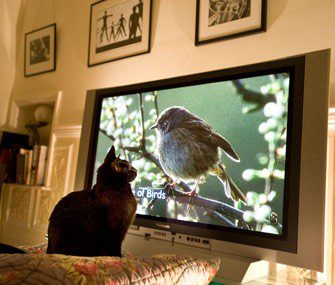
How to properly punish a cat?
An experienced breeder will tell you for sure that it is unacceptable to punish cats by beating or locking them in a room. Answering the question of how to punish a cat for bad behavior, experts always warn against screaming. Raising your voice to an animal is a serious stress for him. The pet is afraid, but does not learn the rules of behavior. It’s one thing to call him by his name once, and another to scold him loudly. The first is allowed, the second is not.
The “forbidden tricks” also include lifting cats by the collar, which can lead to stretching and even tearing of the neck muscles. A group of measures designed to scare the animal can also be dangerous – for example, spraying the muzzle with a spray of water or loud sudden sounds. Such ways of raising a cat can lead to the development of injuries and phobias in the animal, which are very difficult to deal with.
In general, to the question of whether it is possible to punish cats, there is a definite answer: no.
But you can set the boundaries of the norm and teach your pet the right reactions with a few tips.
It is important for cat owners to remember that cats are different from dogs in many ways. Both of these pets are very smart animals, but still the brain of cats works a little differently. It is not so easy to teach teams with mustachioed stripes, and any attempts to punish cats can turn out to be completely counterproductive and traumatic. If you want to help your kitten distinguish “bad” from “good”, positive reinforcement and a little trickery are much more effective methods.
If you are thinking about how to punish a cat for bad behavior, evaluate the situation: what if you can do without punishment at all? Very often, the reasons for the bad behavior of cats can lie on the surface. For example, a cat that ruins furniture or sharpens its claws on walls should be given a scratching post. You should also be patient if the pet went to the toilet in the wrong place. A loving owner will first find out the reason for what happened. An uncleaned tray or even health problems in the animal may be to blame. If you notice a change in behavior or habits in your cat, the first step is to take your pet to a specialist who will help determine the cause of the problem and suggest the best solution. You can do this in a veterinary clinic or even online using the Petstory app.
If you are sure that the pet simply does not understand what is good and what is bad, then instead of punishing as an educational measure, try to explain using the following discipline methods:
Stop and leave the situation as soon as you see unwanted behavior. For example, if a cat starts biting your fingers while you play, stop petting it and move away. This will help your pet understand that you do not like his actions and should not be repeated. You can also smoothly shift the animal’s attention from one activity to another using treats or catnip.
Use special tools. If your furry friend keeps sharpening his claws on the couch or marking inappropriate places, use the power of scents to keep your cat at bay. You can buy oils that smell like eucalyptus, citronella, and red pepper, or you can choose cat repellent sprays.
outsmart the cat. Another option is to use materials like tinfoil or double-sided tape to cover areas that animals would rather stay away from. Cats do not like the texture of such materials, so over time they will begin to ignore them. You can reinforce the correct behavior by rewarding your pet with treats.
Listen to your pet’s needs. Animals can sometimes misbehave in response to their needs being ignored. So they try to draw your attention to themselves and the uncomfortable situation. Think about whether you give your four-legged enough time, how often you change the tray, whether he has access to toys and entertainment.
Contact a specialist if you need help. Never give up or put up with bad animal behavior. This is unfair to you and your cat. If you’re trying to find a safe way to punish your cat, look to the experts.
When thinking about how to punish a cat, always remember that the best way to discipline any pet is to reward good behavior, not punish bad behavior. If the animal began to use not a sofa, but a scratching post for claw training, thank him. For example, give the cat a treat, a toy, stroke it, or praise it. Do the same when your pet is using the toilet or playing with toys instead of a curtain or extension cord. This will help him understand what you like and what you don’t. If possible, use the same treats in similar situations so that the cat can make connections and be motivated to behave well.
By following these simple guidelines, you can build a strong and trusting relationship with your pet.
11 September 2017
Updated: September 16, 2022





